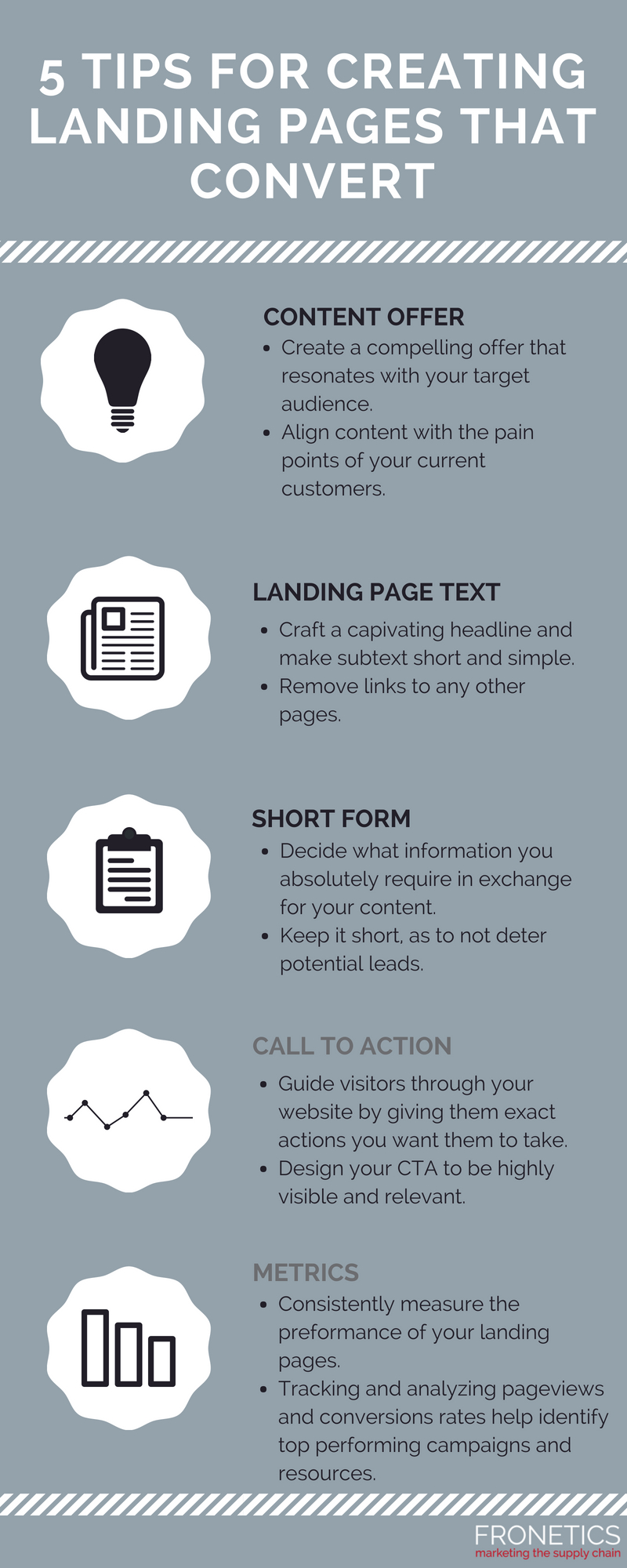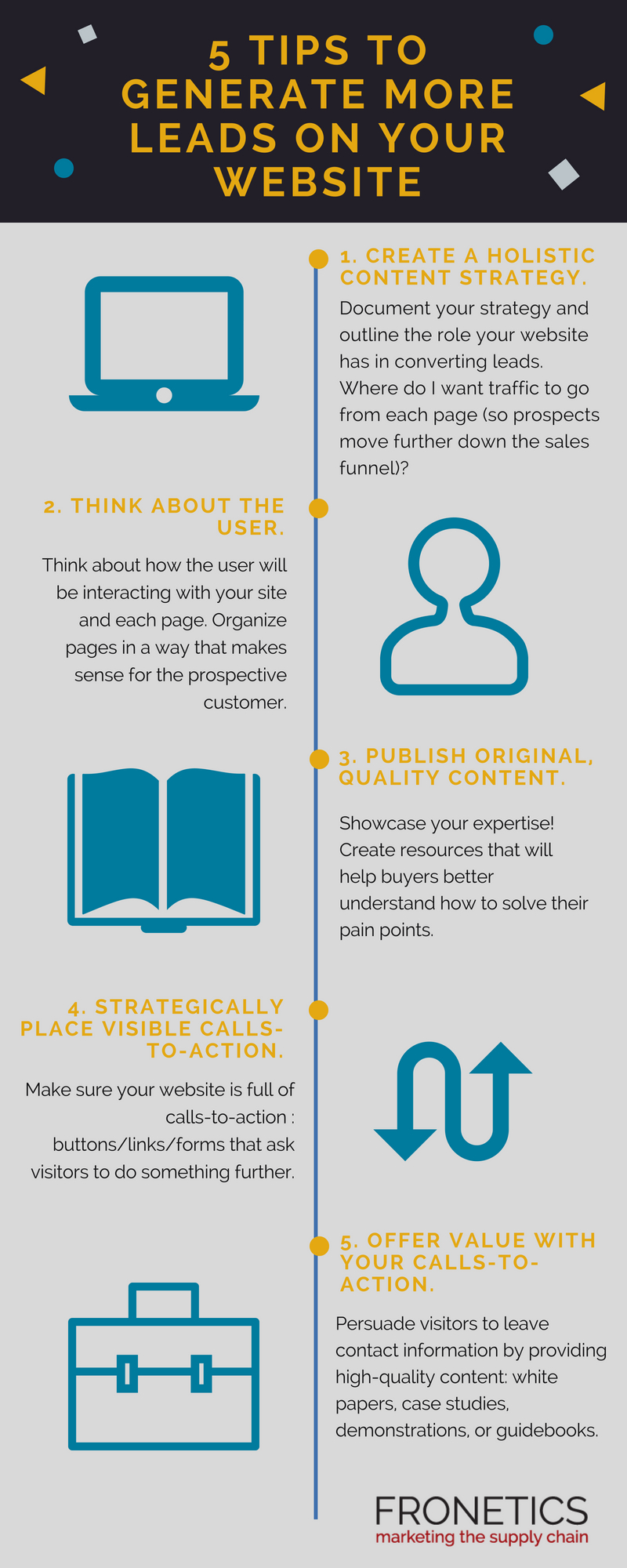
by Fronetics | Oct 3, 2018 | Blog, Content Marketing, Data/Analytics, Logistics, Marketing, Social Media, Supply Chain
Use these three steps to calculate your social media ROI and prove the value of your investment.
As supply chain and logistics businesses are finally recognizing the merits of content marketing, and more specifically social media platforms, many are looking into implementing a program at their companies. But it doesn’t take much research to realize what an enormous investment it is. And how difficult it can be to prove social media ROI.
We understand the time and money it takes to successfully implement and manage a social media strategy as a part of your content marketing plan. Many companies we talk to need help convincing management that it’s a worthwhile investment. To that we say, use data!
[bctt tweet=”We understand the time and money it takes to successfully implement and manage a social media strategy, as a part of your content marketing plan. Many companies we talk to need help convincing management that it’s a worthwhile investment.” username=”Fronetics”]
But what data should you use? How do you quantify certain benefits, like growth in brand awareness? And do you really have to keep track of all the hours you spend managing social media, crafting new tweets, etc.?
Here are three simple steps to start proving your social media ROI.
Infographic: 3 steps to prove social media ROI

(Made with Canva)
Final thoughts
Once you’ve calculated ROI for your social media platforms, it’s time to think strategically about optimizing your content marketing resources in terms of allocation and timing. Having hard data helps you answer questions about which initiatives are most fruitful, what language engages your audience best, when your efforts are most likely to pay off.
Ultimately, this data-driven approach lets you continually adapt to the needs of your audience, ensuring an ongoing, robust ROI.
Have you had to prove your social media ROI? What strategies did you use?
Related posts:


by Fronetics | Oct 2, 2018 | Blog, Content Marketing, Leadership, Manufacturing & Distribution, Marketing, Strategy, Supply Chain
Infographics are a content powerhouse, but creating them isn’t always easy. These five tips will help you make the most of this format.
Infographics can be one of the most effective content mediums. We know that digital natives, who make up the majority of B2B buyers today, prefer short-form, highly visual content. So infographics make a lot of sense when it comes to speaking their language.
[bctt tweet=”Infographics can be one of the most effective content mediums. We know that digital natives, who make up the majority of B2B buyers today, prefer short-form, highly visual content. ” username=”Fronetics”]
Infographics are also prime candidates for reposts on social media. But, if you’ve ever tried to create one yourself, you know making an effective infographic is a lot harder than it sounds.
It might seem daunting at first, but these five tips will go a long way to help you in creating infographics that are effective in engaging supply chain buyers.
5 tips for creating infographics that engage supply chain buyers
1. It’s all about the title
Well, maybe not all, but your title does matter a lot. When it comes to infographics, your audience will definitely be judging a book by its cover. This means that your title should be accurate, short (70 characters or less), descriptive, and engaging. This is how your audience will decide whether they’ll click and read.
2. Colors matter
You’d be surprised by how much people are influenced by color in their content choices. The color scheme you choose should make your readers feel comfortable and should be visually appealing. This generally means sticking to two main colors and using no more than four colors. Use clear, bold colors for your main colors, and subtle, warm tones for complimentary colors.
3. Bump up your SEO
There aren’t a lot of downsides to infographics, but, unfortunately, there is one: publishing them on your blog doesn’t do much for your SEO, since text in infographics is contained in the image and isn’t recognized by search bots. But there’s an easy way around this: Include a transcript of your text with your graphic. I recommend writing at least 350 words, in addition to the graphic, to boost SEO.
4. Keep it simple
There’s a reason that simplicity is king when it comes to graphic design online. Increasingly, designers and businesses are favoring clean, minimalistic layouts. This means few unnecessary elements and plenty of white space so as not to overwhelm readers and to convey information without unnecessary distractions.
5. Get interactive!
If you’ve mastered creating infographics and are feeling ambitious, try taking on the next big thing: interactive designs. This means your readers can engage with your content, whether by hovering over it, clicking on it, or even answering questions or taking a quiz.
There are a number of infographic-creation tools available on the internet these days. At Fronetics, we really like using Canva, which has plenty of templates that are easy to use and do a lot of the design work for you.
What are your tips for creating infographics?
Related posts:


by Fronetics | Aug 27, 2018 | Blog, Content Marketing, Logistics, Marketing, Social Media, Strategy, Supply Chain
Repurposed and repackaged, your existing content is a valuable asset for your sales force throughout the buyer’s journey.
If you’re a supply chain marketing professional, it’s likely that you spend a tremendous portion of your day researching, creating, packaging, and disseminating content. Your hard work is all about growing brand awareness and building your reputation as a trusted industry thought-leader — all with the goal of having that work eventually convert leads.
But, consider this: When it comes to engaging prospects and clients, only 20% of salespeople actually use content. When we know that potential buyers are far more willing to engage with someone offering them information and insight, why are B2B businesses abandoning content as soon as prospects are handed over to sales?
B2B buyers prefer content throughout the buying journey
According to DemandGen’s 2018 Content Preferences Survey Report, “Buyers are becoming increasingly more selective in the content they are consuming,” relying more on “trustworthy sources, industry influencers, and their peers to educate themselves.” And furthermore, 88% of those survey respondents want less focus on product specifics and more on the value that product can bring to their business.
[bctt tweet=”Buyers are becoming increasingly more selective in the content they are consuming, relying more on trustworthy sources, industry influencers, and their peers to educate themselves.” username=”Fronetics”]
And on the other side of that coin, according to HubSpot writer and marketing expert Bethany Cartwright, sales reps spend about 15% of their day leaving voicemails, and only about 20% of all sales emails are ever opened. “This means 80-85% of sales outreach efforts are going unnoticed by those prospects you’ve worked so hard to capture with content,” writes Cartwright.
It’s time to start leveraging your content throughout the buyer’s journey by arming your sales force with content. Before you panic at the idea of creating reams of new content, take a breath. It’s more than likely that you can repurpose your existing content, optimized to give your sales force the tools they need to close deals.
So how do you go about repurposing your content and giving your sales force the best possible tools with which to convert prospects to buyers? Web Profits co-founder and author Sujan Patel suggests “mapping content generated by your marketing team to each stage of your customer’s buying journey.” We’ve created the infographic below to help you optimize content for each of the three stages of the buyer’s journey.
Infographic: Delivering content throughout the buyer’s journey

(Made with Canva)
Related posts:


by Fronetics | Jul 3, 2018 | Blog, Content Marketing, Logistics, Marketing, Supply Chain
Getting lots of web traffic but short on leads? Here are five tips to help create strong landing pages that convert visitors to leads.
We hear it all time: “My website is getting great traffic, but we’re not converting those visits to leads.”
We compare it to the Patriots getting the ball all the way down the field but then not being able to score a touchdown. Chances are your landing pages are the problem.
[bctt tweet=”We hear it all time: “My website is getting great traffic, but we’re not converting those visits to leads.” We compare it to the Patriots getting the ball all the way down the field but then not being able to score a touchdown. ” username=”Fronetics”]
Landing pages are a fundamental tool in converting website visitors into leads. They’re what convince your visitors that they absolutely must download your fabulous resource offer. Yet oftentimes they’re treated as the annoying little sibling to high-value content pieces — tagging along almost as if an after-thought.
In reality, landing pages have just as much, and possibly even more, importance than the content offer. What good is your best resource if your landing page doesn’t do its job? You don’t want people to just visit your website. You want them to take action while they’re reading your content.
Here are five tips for supply chain marketers who are looking to generate better conversion rates from their landing pages. These tips make it easy — and tempting — for visitors to take action.
Infographic: 5 tips for creating landing pages that convert

(Made with Canva)
Key takeaway
It comes down to basically one objective: Be clear about what you want your visitor to do on your landing page. All of these recommendations help to create a landing page that makes it easy — and beneficial — for visitors to take a specific action.
Once you’ve made adjustments to your landing page, don’t forget to test, test, test! Still not getting the conversions you’re looking for? Go back and continue to tweak. Soon enough, you’ll have solid landing pages that convert those visitors to leads.
Related posts:


by Fronetics | Jun 21, 2018 | Blog, Content Marketing, Logistics, Marketing, Supply Chain
If you’re looking to generate more leads on your website, you need to create opportunities to capture visitors and implement a strong content strategy to encourage engagement.
Lots of supply chain and logistics companies are catching on to the benefits of content marketing. And of those, many are implementing a content marketing strategy to plan and execute their marketing.
[bctt tweet=”There’s no point in pouring a bunch of time, money, and resources into a robust content marketing program if the website that you’re driving traffic to stinks.” username=”Fronetics”]
But there’s an issue a lot of supply chain and logistics companies are running into: a weak website that doesn’t encourage the generation of leads. Essentially, there’s no point in pouring a bunch of time, money, and resources into a robust content marketing program if the website that you’re driving traffic to stinks.
In a recent post, we talk about what a weak website looks like. If you think you may fall into this category, don’t fret. There is still time to generate more leads on your website.
Consistently producing quality content and making sure you’re utilizing various distribution channels — social media, a blog, etc. — will help draw your target audience to your website. Once they’re on your site, you need to make sure they have a positive user experience. And more importantly, they need ample opportunities to learn more about your products and services.
These opportunities to engage with your content help move users down the sales funnel. You’ll capture leads that have the potential to become sales.
So how do you ensure your website is a lead-generating machine? Here are five tips to generate more leads on your website.
Infographic: 5 tips to generate more leads on your website

(Made with Canva)
Most importantly, remember to be prudent about the role your website plays in the lead-generation process. A strong website with quality content, great visuals, and easily identifiable calls-to-action only works to generate leads and push users down the sales funnel. You’ll still need someone to help close the deal.
Related posts:














